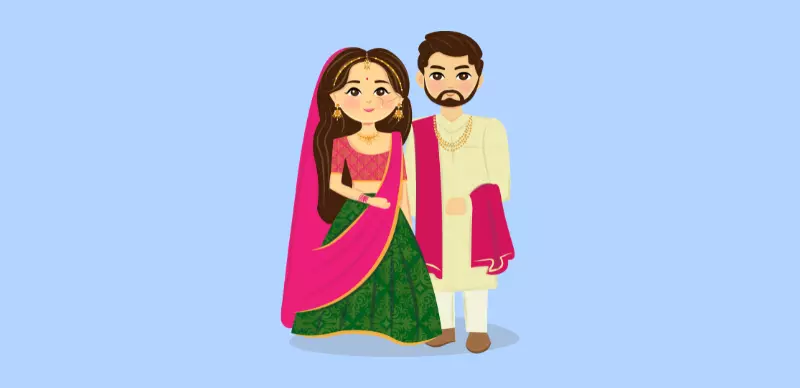Hindu Marriage – Marriage is the foundation of civil society and an institution that admits men and women to family life. It is defined as a physical, legal, and moral union between a man and woman in the community of life for the establishment of a family. According to Monch, A man or woman who is not married is not complete or perfect in his or her personality.
Aims of Hindu Marriage
Dharma – It plays a great role in every Hindu marriage. The Hindu way of culture has been influenced by Dharma. K.M. Kapadia says that Hindu marriage was desired not so much for sex or progeny as for obtaining a partner for the fulfillment of one’s religious duty. Because of the necessity of the wife for performing the religious rite, she is designated as ”Dharma Patni”.
Praja – Praja is considered the second major aim of Hindu marriage. The sastras enjoin man to marry for purpose of procreating a son necessary for the salvation of his soul. It is believed that a Hindu must marry in order to beget a male child who will rescue his father from falling into the ditch of hell called “Put Narka”.Therefore son is referred to as Putra.
Rati – Rati or satisfaction of sexual desire is given the least importance in Hindu marriage.
Forms of Hindu Marriage
Brahma – It is known as the best form of marriage. According to C.D Banerjee, this form of marriage is so-called because it Was fit for Brahmins. In this form of marriage, the daughter is gifted to the one learned in the Vedas and of good character.
Daiva – It is slightly different from Brahma’s marriage. In this sense, the suitor is an official priest, and special qualities like good character, scholarship in Vedas, or good family background of the bridegroom were not emphasized in selection. The rite which sages called Daiva is the gift of a daughter whom her father has given when the sacrifice is already beginning to the official act of the priest in religion. This is only for Brahmins.
Arsha – When the father gives his daughter away after having received from the bridegroom one or two pairs of kine, that marriage is called Arsha. This form of marriage is also peculiar to Brahmins.
Prajapatya – In this form of marriage the father gives away his daughter with due honor distinctly saying “May both of you perform together with your civil and religious duties”. The basic condition in this form of marriage is that the bridegroom is to treat the bride as a partner for secular and religious purposes.
Asura – In this form of marriage, the bride was given to the husband in payment of consideration called “Sulka” or brideprice. When the bridegroom, having given as much wealth as he can afford to the father and to the damsel herself, takes her voluntarily as his bride. This refers to Asura’s marriage.
Gandharva – It is this form of marriage in which there is a union of a man and a woman by mutual consent. These types of marriages are found in epics and Puranas, “Swayamvara”.
Rakshasa – This can be described as marriage by capture, resembling the right of a Victor to the person of the captive in war. The maiden is forced from her house to marry the bride after her kinsmen or friends have been defeated or wounded or killed in battle.
Paishacha – It is the last and worst form of marriage among Hindus. When the lover secretly embraces the damsel, either giving her strong liquor or disordered her intellect, that sinful marriage is Paishacha marriage. This form of marriage was most abominable, originating from a sort of rape committed by a man upon a damsel either when asleep or when drunk on drugs.
Types of Hindu Marriage
Monogamy – It is an ideal type of marriage among the Hindus. It is the type of marriage where one man is married to one woman at a time. It is the union of one man with one woman.
Polygamy – This type of marriage allows a man to marry more than one wife at a time.
Polyandry – In this type of marriage, the woman accepts more than one husband. In fraternal polyandry, the woman becomes the wife of several brothers. In non-fraternal polyandry, the woman becomes form simultaneous alliances with two or more men who are not related to each other.

